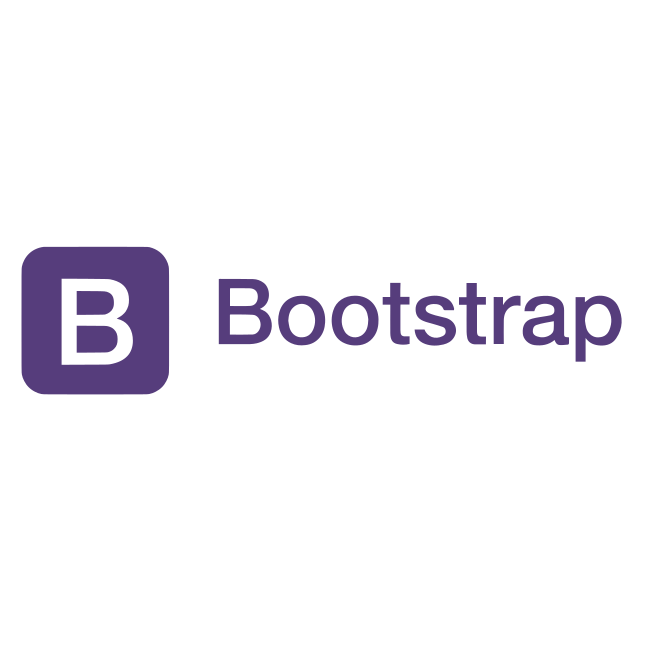Bootstrap
Abbreviations
*[CSS]: Cascading Style Sheets
*[JS]: JavaScript
Introduction
This unit will cover how to use one of the most popular libraries in web development: Bootstrap. Libraries provide additional functionality outside of what is built-in the language. They provide new functionality for you to use without having to implement the functions and methods yourself. Twitter Bootstrap is a CSS library that will give you a tremendous amount of power for styling pages as you see fit. This library is extremely pervasive and relatively easy to use.
Bootstrap is the most widely used CSS framework. You'll be able to use its features to create more beautiful looking, neatly ordered web pages.
This is an optional subunit on Twitter Bootstrap. This material is very good to know, but not mandatory for course completion. You will find Bootstrap in some of the starter code throughout the course, but you will not need to know how to write any Bootstrap code in order to complete any projects. When reading through this code, you might be confused about what the Bootstrap does - in that case either Google the classes or refer to this subunit.
In this subunit, we'll cover Twitter Bootstrap. Bootstrap is one of the most popular CSS frameworks and is essential for modern front-end web development. We'll go over what Bootstrap is, why you would use it, and some of the most useful features it offers.
Goals
Learn benefits of Bootstrap & how to include it
Learn Bootstrap layout/grid system
Meet some of the more important components
Learn to integrate Font Awesome into
Benefits
Make tricky column layouts easy
Provides consistent results across browsers
Make responsive design much easier
Includes useful interactive components
Modals, dropdowns, popovers, etc.
"Declarative" look and feel
Easier to theme
Familiar for writing custom CSS
Responsive Groups
xs - cell phones in portrait mode sm - cell phones in landscape / small tablets md - tablets lg - most desktop users xl - very-wide desktop windows
Semantic Colors
Name | Purpose | Default |
|---|---|---|
primary | Brand color | blue |
secondary | Neutral brand-appropriate color | grey |
success | Operation successful | green |
danger | Dangerous operation / error | red |
warning | Risky operation | orange |
info | FYI message | light blue |
Used for table cells, text, buttons, & more
Using Bootstrap
Include their CSS:
To use interactive components, include JS:
Layout
All content should descend from a container element:
.container-fluid - Full-browser-width container (with small amount of breathing room).
.container - Full-browser-width but at specific breakpoints. Makes Ul testing easier: far fewer possible layouts to test.
Content that doesn't need to be in columns can go directly in this.
Grids
12 Column Layout
Cells can span any number of columns
After all columns are used, will become new row
To use: all columns must be in a .row
two rows of 3 columns
Responsive Grid
Can specify a breakpoint: that size and above use this
Specification without breakpoint is for xs
different # columns
(2 columns on cell phones; 3 columns for larger devices)
Auto-Columns
Can leave off numbers & divide by available size
Useful when you don't know how many items there will be
auto-columns
Font Awesome
Awesome set of icons for common symbols & brands
Comes as a font, so it scales & can be in any color
Convenient classes for resizing, animating, stacking, and more!
Include this:
Use icons by name on a / or span tag
Wrap-up
Does everyone use Bootstrap
No
But almost everyone uses some CSS framework
Other popular frameworks:
Theming Bootstrap
Can write your own CSS to change things
Can make your own Bootstrap with SASS (advanced)
Can find thousands of Bootstrap themes
Can easily use Bootswatch
